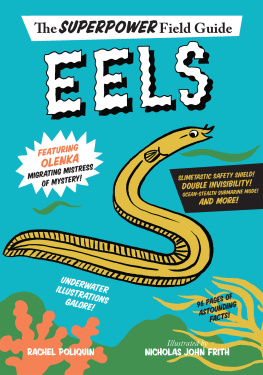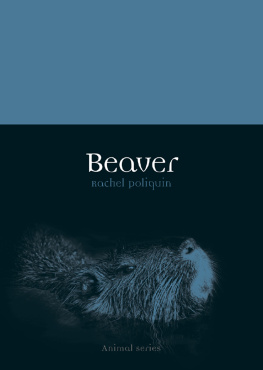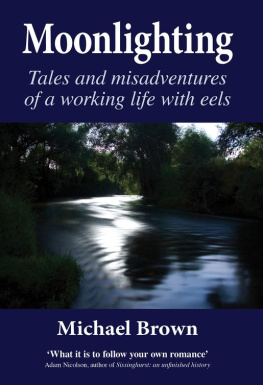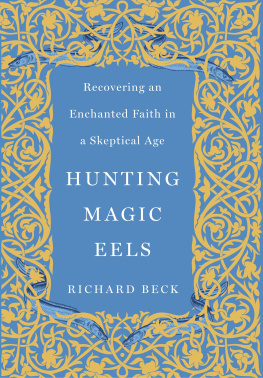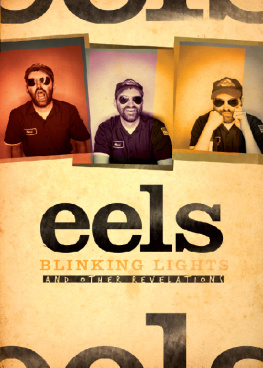For Amy Tompkins and Kate OSullivan, with enormous gratitude. You set me on my way. R.P.
To Kate & Whitney, for setting me loose to run wild with beavers... And, to Rachel, for her wonderful writing in the first place. N.J.F.
Special thanks to Ruby Banwait and the Vancouver Aquarium.
Text copyright 2020 by Rachel Poliquin
Illustrations copyright 2020 by Nicholas John Frith
All rights reserved. For information about permission to reproduce selections from this book, write to or to Permissions, Houghton Mifflin Harcourt Publishing Company, 3 Park Avenue, 19th Floor, New York, New York 10016.
hmhbooks.com
The illustrations in this book were produced using a mixture of black ink, pencil, and wax crayon on paper, in a technique known as preseparation. The artwork was colored digitally.
Cover design by Whitney Leader-Picone
The Library of Congress has cataloged the print edition as follows:
Names: Poliquin, Rachel, 1975 author. | Frith, Nicholas John, illustrator.
Title: Eels : the superpower field guide / by Rachel Poliquin ; illustrated by Nicholas John Frith. Description: Boston : Houghton Mifflin Harcourt, [2020] | Series: Superpower field guide | Audience: Age 710. | Audience: Grade 4 to 6. | Includes bibliographical references. Identifiers: LCCN 2019020309| ISBN 9780544949218 (hardcover picture book) | ISBN 9780358272588 (trade paper)
Subjects: LCSH: EelsJuvenile literature.
Classification: LCC QL637.9.A5 P65 2020 | DDC 597/.43dc23
LC record available at https://lccn.loc.gov/2019020309
eISBN 978-0-358-33004-2
v1.0620

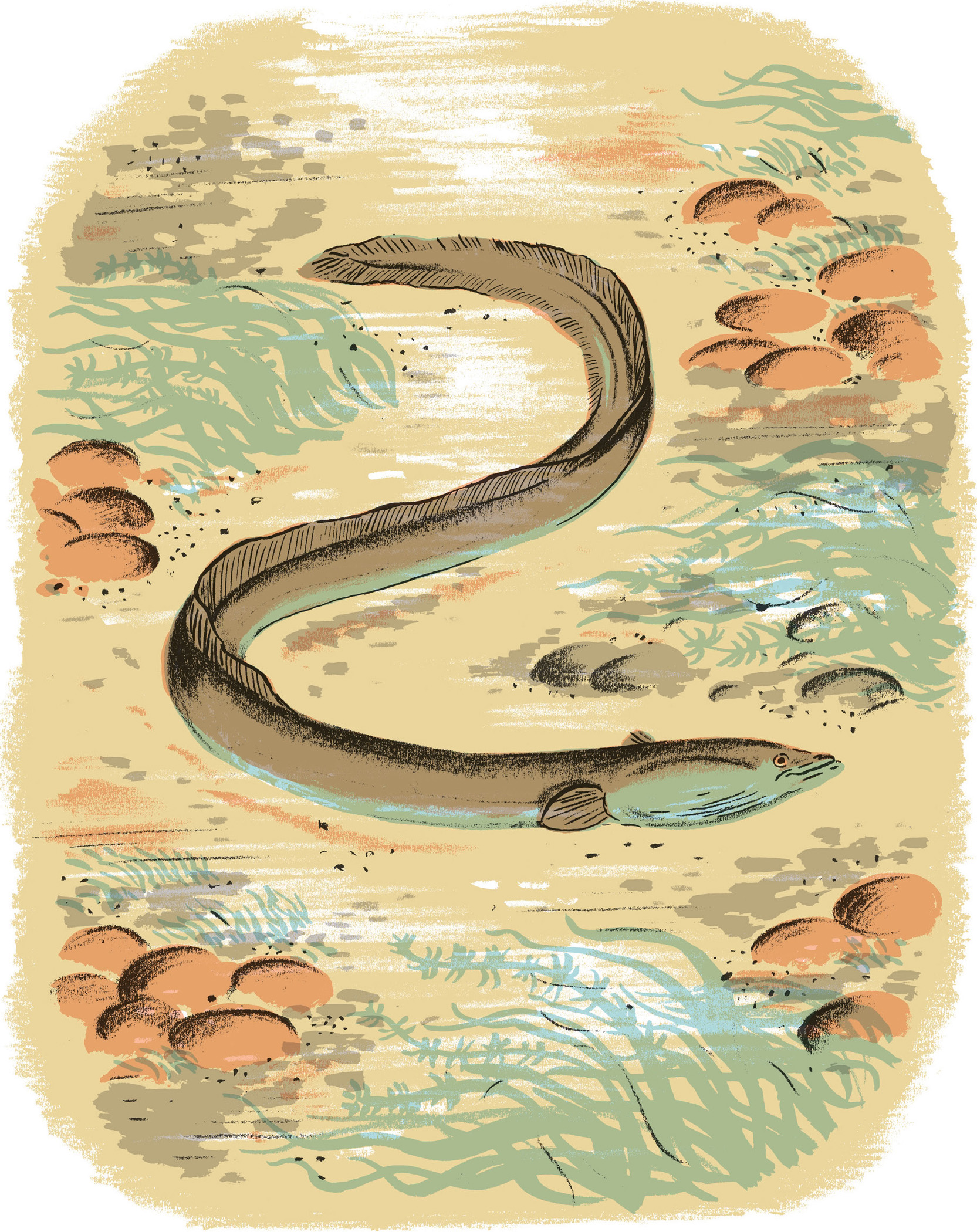
THIS IS AN EEL.
Just an ordinary eel.
But even ordinary eels are extraordinary. In fact, even ordinary eels are animal superheroes.
Did I hear you say, But arent eels just long, slippery, slimy fishy-things that... hmm... Is there anything more to know?
You bet your buttons there is! Imagine this: While this eel was just a baby half as big as your pinkie finger, she swam 300 million times the length of her body. If Im doing my math right, and if youre about four feet tall, thats the same as you traveling all the way to the moon!
Impossible! you say.
I say, You dont know eels.
But you will.
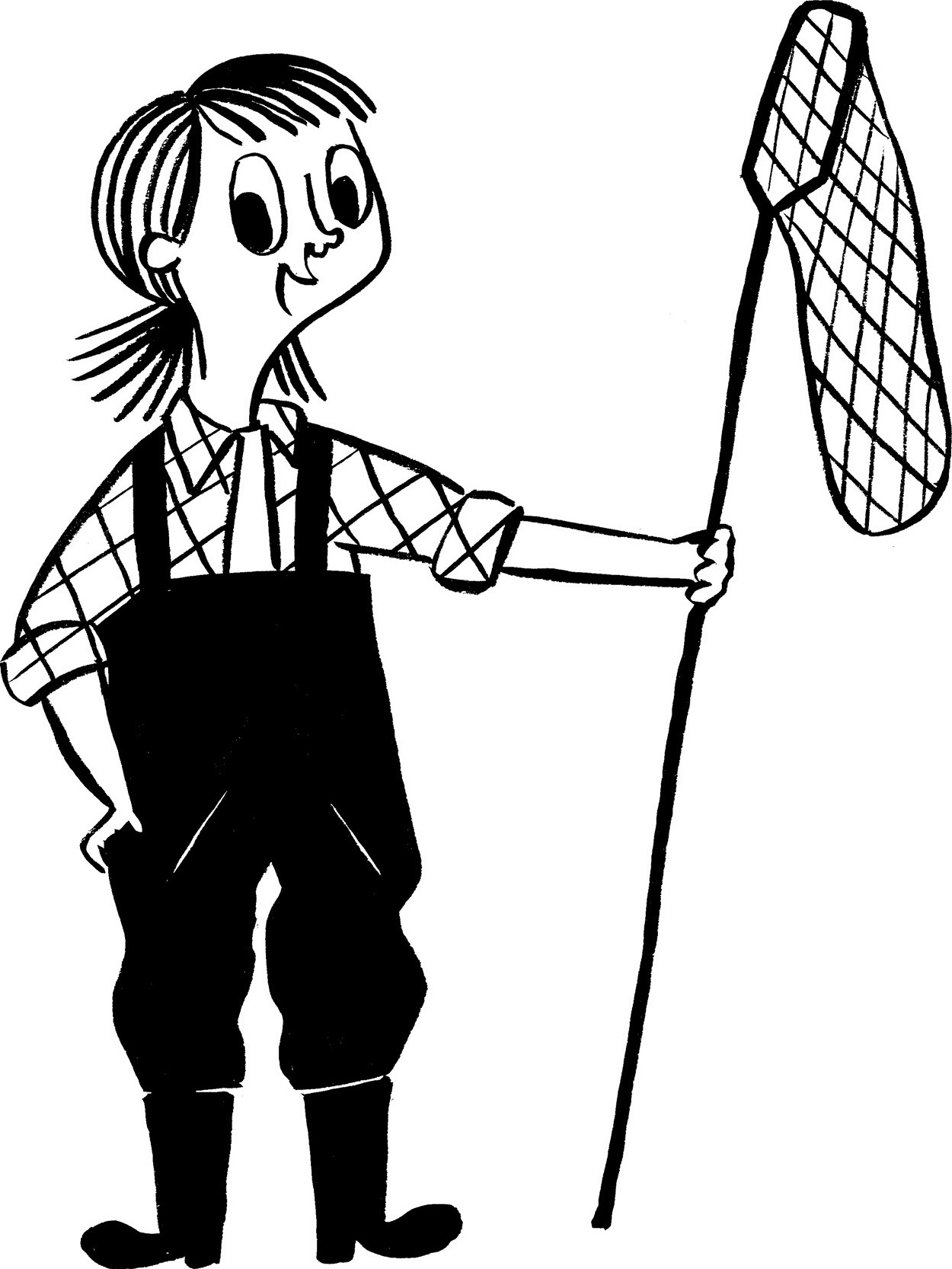
Meet Olenka
MEET OLENKA, AN ORDINARY EEL. Olenka may be plain, slimy, and the color of mud, but never, ever underestimate an eel like Olenka. Eel superpowers include:
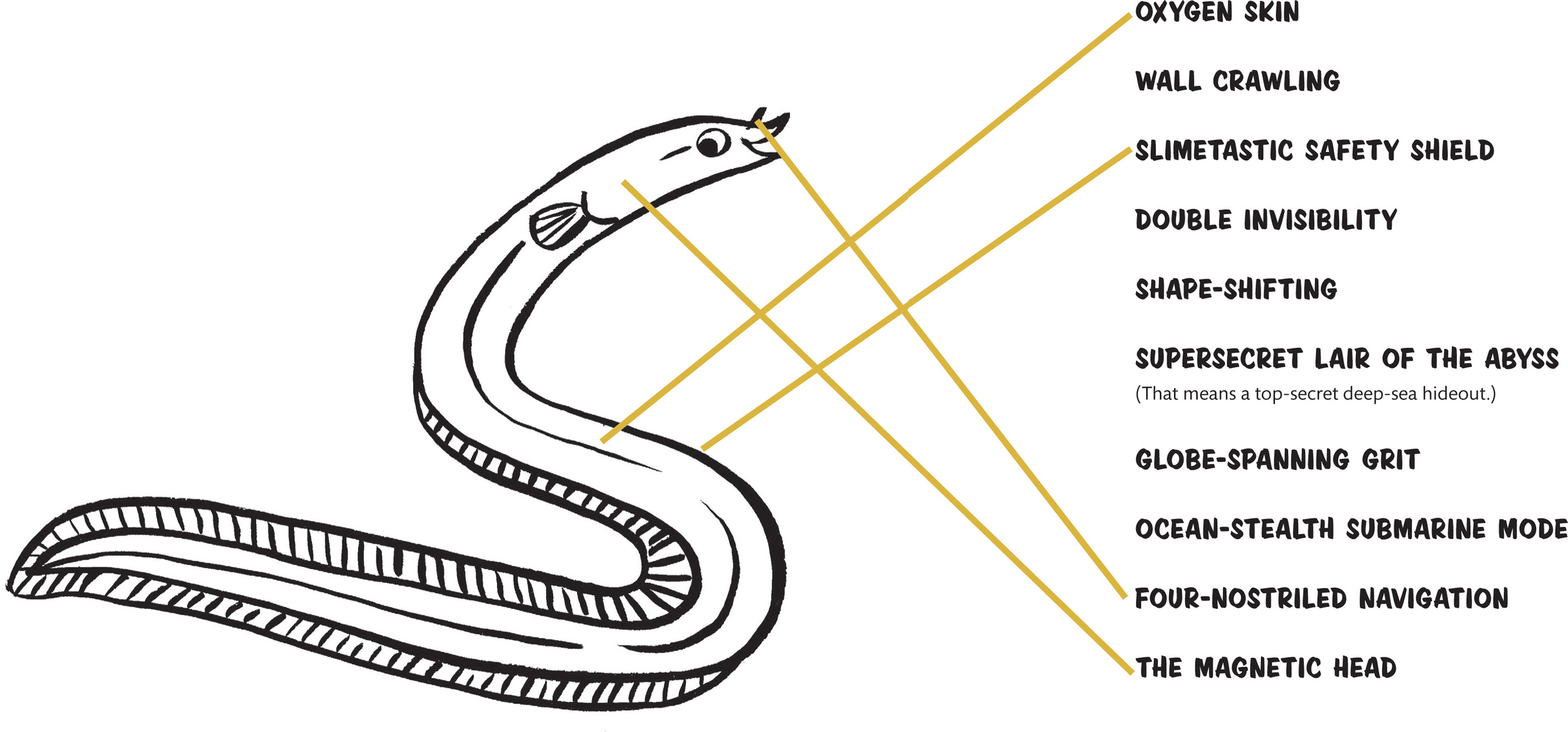
So sit back and hold on tight, because Olenka is going to amaze you. I promise. In fact, Olenkas life is so unknowably extraordinary, eels have bamboozled the smartest scientists for thousands of years. You see, Olenka isnt just superpoweredshe is also very good at keeping secrets.
Are you ready? Allow me to introduce OLENKA, MIGRATING MISTRESS OF MYSTERY.
The Eel of Mystery
THE FIRST THING YOU NEED TO KNOW about Olenka is that she is mysterious. Deeply mysterious. Of course, all animals have at least a dash of secrecyscientists dont know everything about every creature. But Olenka and her family, the European eels, are truly, weirdly, deeply, fantastically mysterious. No doubt about it.
European eels live in European rivers and rivers throughout the British Isles, Scandinavia, parts of Russia, and North Africa. Nothing mysterious there. But where do baby European eels come from? Nobody really knows. Where do they go at the end of their lives? Ditto.
Scientists can draw a big circle on a map where they think Olenka was born, and she was probably born from an egg, because thats how other eels do it. But nobody really knows for sure, because no one has ever found a European eel egg. Ever. Can you believe it?
People have known about eels since the beginning of time. So how can it be that no one, not even among the best scientists in the world, has ever found an eel egg? Its very strange. I call it THE GREAT EEL MYSTERY. And this is just one of Olenkas many mysteries. There are mysteries at the end of her life too, and mysteries deep inside her brain, and a very large, very bad mystery that might swallow eels into darkness forever.
But lets forget about all that for now. Lets start in the middle of the story and talk about what we do know about Olenka.
Extraordinarily Ordinary
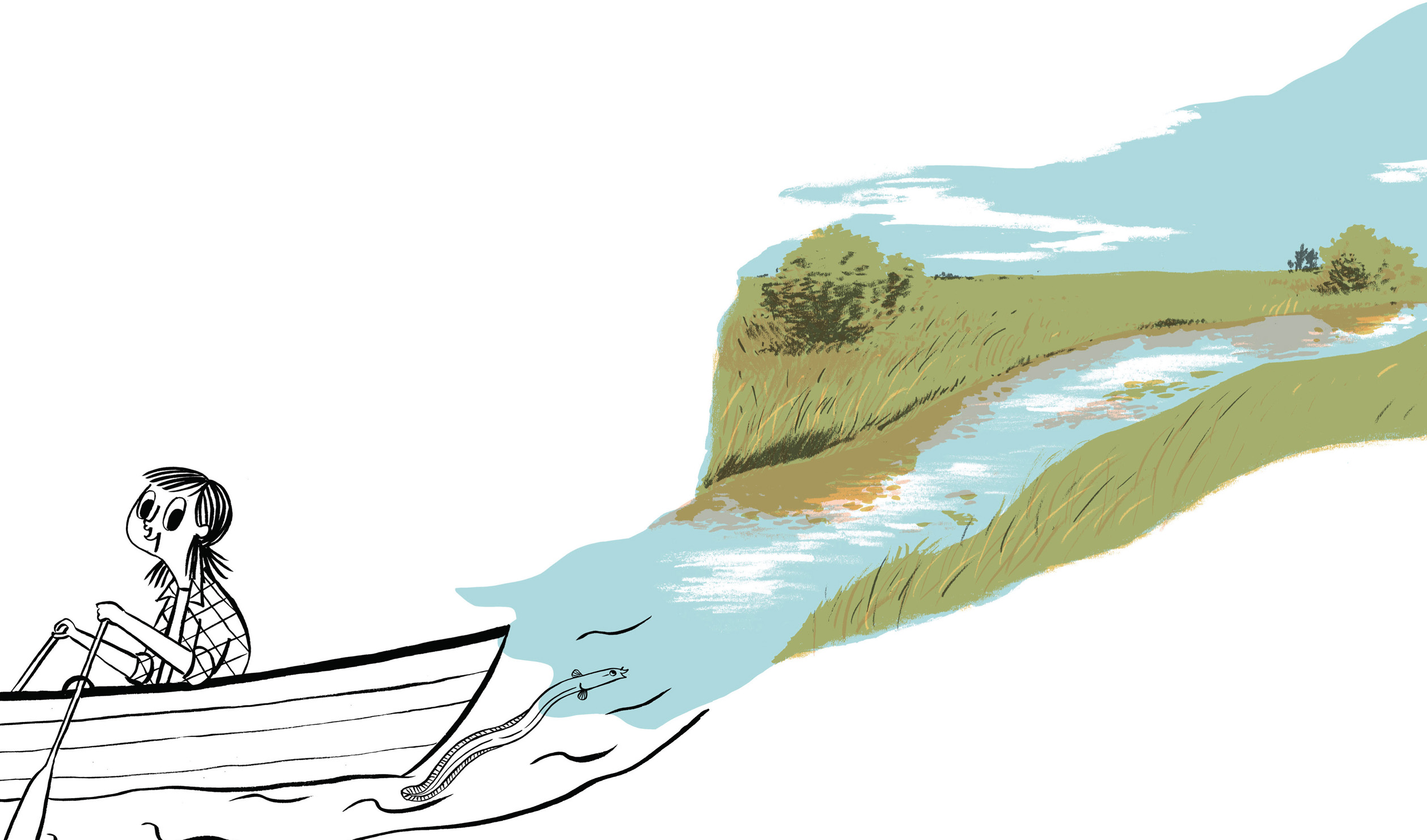
WHAT MAKES OLENKA ALL THE MORE MYSTERIOUS is how very ordinary she seems for most of her life.
Here she is at home in her ordinary river. Its a pretty river, north of Saint Petersburg, running through a quiet part of the Russian countryside. The river is not too fast, not too slow, with just the right amount of mud at the bottom.
Olenka is a nocturnal predator, which means she lazes her days away, curled up in her burrow at the bottom of the muddy river. Then, by moonlight, she gobbles snails, little fishes, bugs, and worms. It all seems perfectly, pleasantly ordinary, doesnt it?
And it gets more unexcitingly ordinary. Olenka has spent eighteen years here without moving more than 100 yards (90 meters) in either direction. If you lived nearby, you could have visited her every day for eighteen yearsevery day for 6,574 days!and found her exactly where shed been the day before.
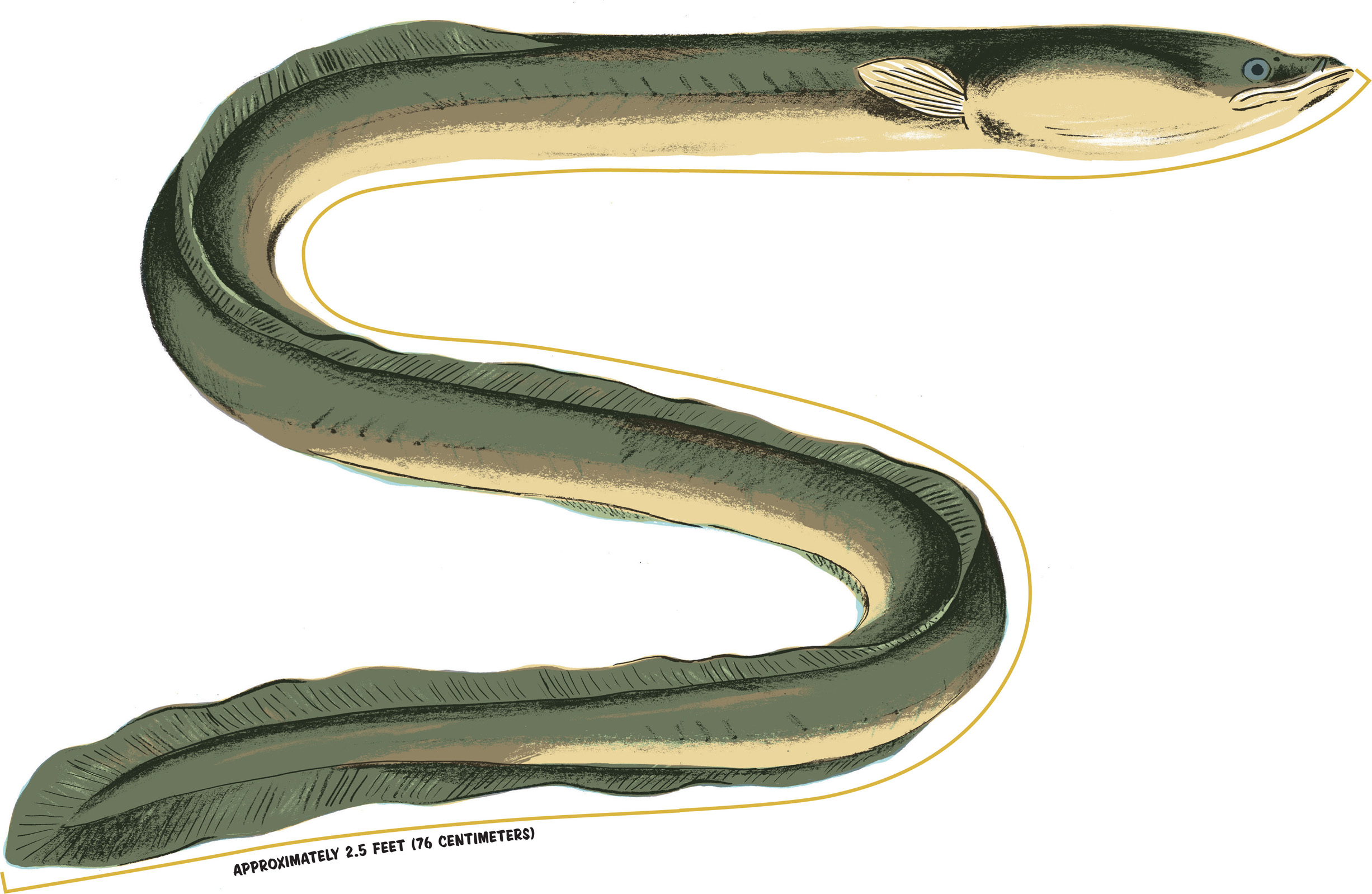
Her back is an ordinary fishy-brown color. Her belly is fishy yellow. Shes about two and a half feet long (76 centimeters), which is not too big and not too small. In fact, everything about Olenka is perfectly, plainly, boringly ordinary.
I know what youre thinking. Youre thinking Ive made a mistake, that Ive confused ordinary Olenka with some far more exotic eel. Like the false moray, which glows neon green under a full moon. Or the Japanese dragon moray, with its nostril horns and polka dots.
But I havent made a mistake. Olenka may seem humdrum, drab, and boring, but dont be fooled by this quiet homebody. Soon shell decide its time. Nobody knows how or why she decides, but when she does, shell become one of the most mysterious animals on earth. That time is coming soon, I think. While we wait, lets meet Olenkas family.
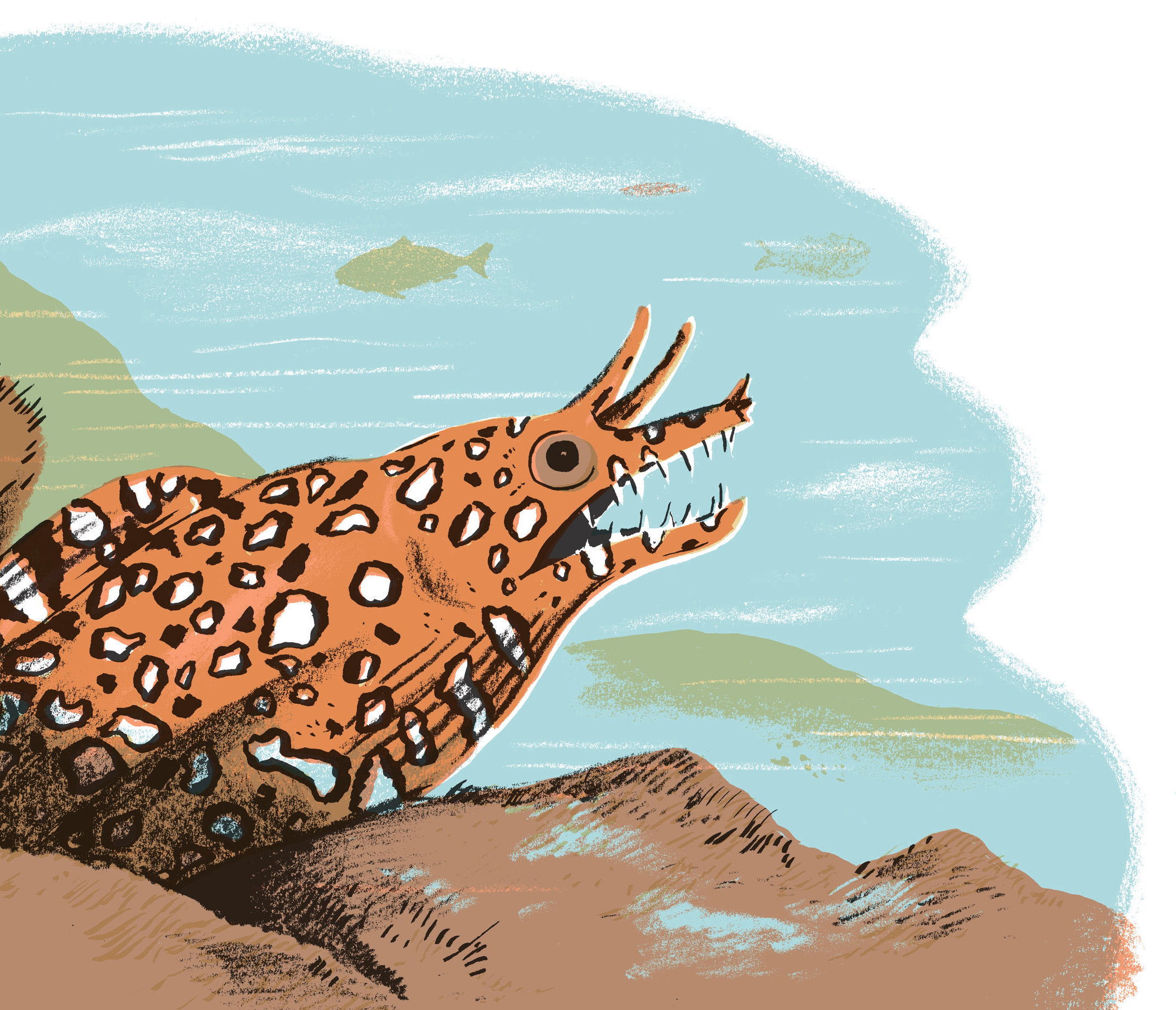
Know Your Eels
ALL TRUE EELS BELONG TO an animal order called Anguilliformes (ann-gwilly-FORM-ees). Anguilliformes is a big and important-sounding word, but it really only means long and wiggly, or eel-shaped if you want to be perfectly precise. (Anguilla is Latin for eels and formes means form or shape.) And its true: all eels are eel-shaped.
The next thing you need to know is that there are around 800 species of true eels. Thats a lot! They all live in the sea, except for just nineteen species of

